-
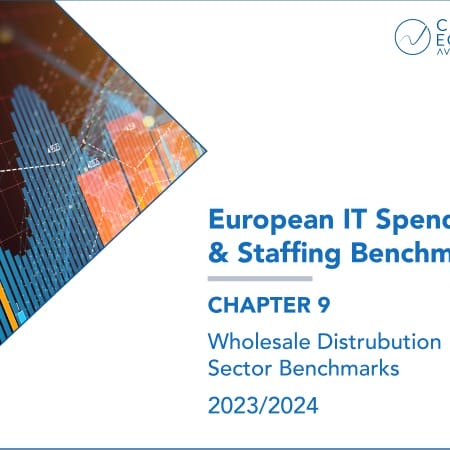
European IT Spending and Staffing Benchmarks 2023/2024: Chapter 9: Wholesale Distribution Sector Benchmarks
Chapter 9 provides benchmarks for wholesale distributors. The category includes wholesale distributors of building products, home improvement products, auto parts, industrial components, fuel supply, electronics, food and beverage, pharmaceuticals, and other products. The 18 respondents in the sample range in size from a minimum of about €60 million to €30 billion in revenue.
September, 2023
-
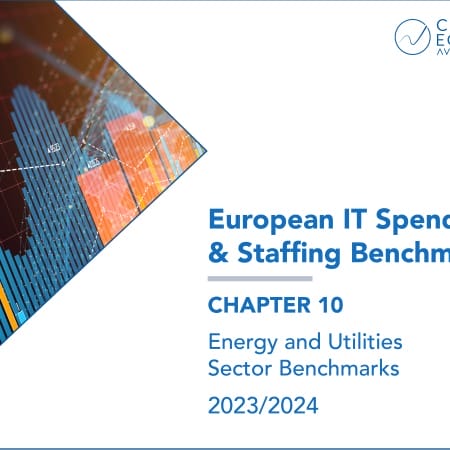
European IT Spending and Staffing Benchmarks 2023/2024: Chapter 10: Energy and Utilities Sector Benchmarks
Chapter 10 provides benchmarks for public utilities, oil and gas producers, service companies, and midstream distributors across all organization sizes. The 18 respondents in this sector include public utilities (water, gas, and electric), regional utilities, integrated energy companies, natural gas companies, pipeline operators, and other energy and utilities companies. The companies in our sample range in size from a minimum of about €150 million to more than €100 billion in annual revenue.
September, 2023
-
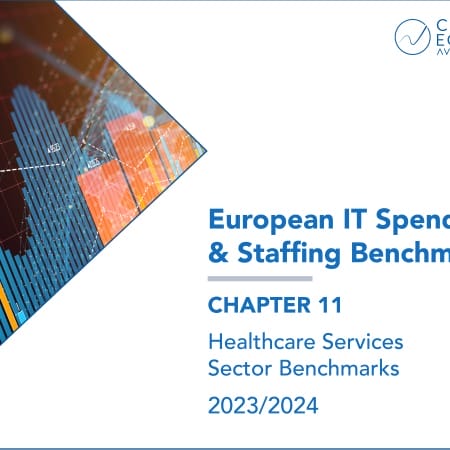
European IT Spending and Staffing Benchmarks 2023/2024: Chapter 11: Healthcare Services Sector Benchmarks
Chapter 11 provides benchmarks for healthcare services companies. The 15 respondents in this sector include community hospital groups, national and regional hospital systems, healthcare systems, long-term care facilities, and other healthcare organizations. These organizations range in size from a minimum of about €50 million to over €15 billion in annual revenue.
September, 2023
-
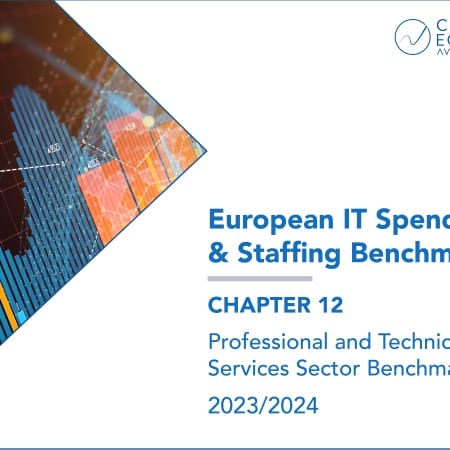
European IT Spending and Staffing Benchmarks 2023/2024: Chapter 12: Professional and Technical Services Sector Benchmarks
Chapter 12 provides benchmarks for professional and technical services organizations. The 45 respondents in the sample range in size from a minimum of about €50 million to about €80 billion in annual revenue. The sector includes firms that provide professional and technical services, including engineering, legal, accounting, financial advice, consulting, marketing, research, and other services.
September, 2023
-
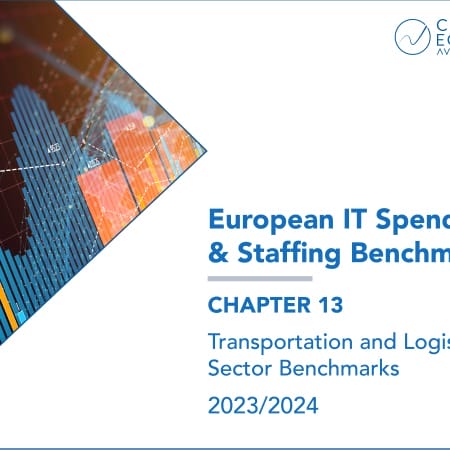
European IT Spending and Staffing Benchmarks 2023/2024: Chapter 13: Transportation and Logistics Sector Benchmarks
Chapter 13 provides benchmarks for the transportation and logistics sector. The 15 respondents in this sample range in size from a minimum of about €120 million to over €5 billion. The category includes organizations that operate buses, trucks, railways, airlines, barges, and ships. The sector also includes logistics companies that transport goods and transportation companies as well as regional and national transportation authorities that move people.
September, 2023
-
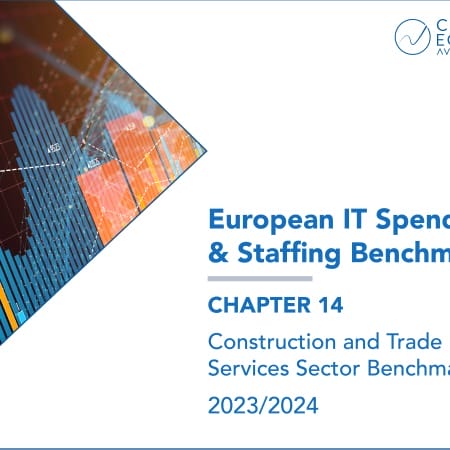
European IT Spending and Staffing Benchmarks 2023/2024: Chapter 14: Construction and Trade Services Sector Benchmarks
Chapter 14 provides benchmarks for construction and trade services companies. The 14 respondents in the sample range in size from about €60 million to over €20 billion in annual revenue. The category includes engineering and construction companies, commercial, residential, and industrial construction contractors, shipbuilders, specialty contractors, environmental services firms, and other construction and trade services firms.
September, 2023
-
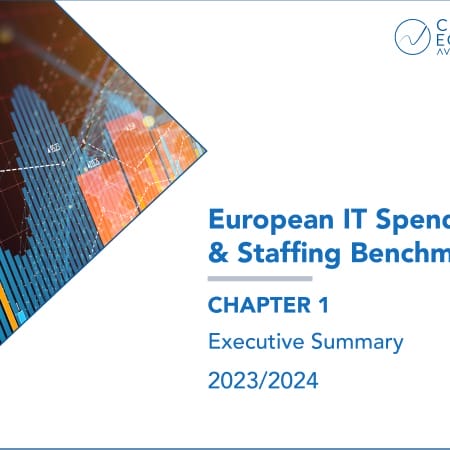
European IT Spending and Staffing Benchmarks 2023/2024: Chapter 1: Executive Summary
This chapter provides an overview of the key findings from the European study and describes the contents of the subsequent chapters. It also includes information on the study participants and the survey methodology.
September, 2023
-
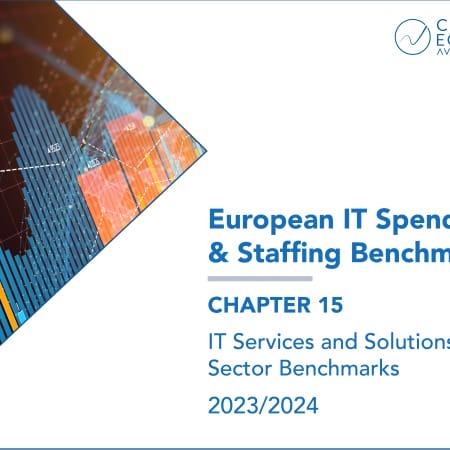
European IT Spending and Staffing Benchmarks 2023/2024: Chapter 15: IT Services and Solutions Sector Benchmarks
Chapter 15 provides IT spending and staffing statistics for the IT services and solutions sector. The category includes software companies, software-as-a-service providers, systems integrators, IT solution providers, business process outsourcing firms, and other providers of technology services and solutions. There are 28 organizations in the sample, ranging in size from around €13 million to over €25 billion in annual revenue.
September, 2023
-
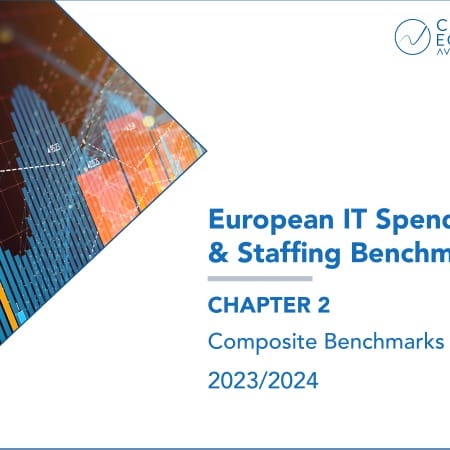
European IT Spending and Staffing Benchmarks 2023/2024: Chapter 2: Composite Benchmarks
This chapter provides composite metrics for all survey respondents across all sectors and organization sizes. The sample includes 101 organizations and is stratified by size and sector as described in the section on survey methodology. Respondents must have at least €50 million in annual revenue or IT spending in excess of €1 million and maintain at least some operations in Europe. There is no upper limit on the size of survey respondents.
September, 2023
-
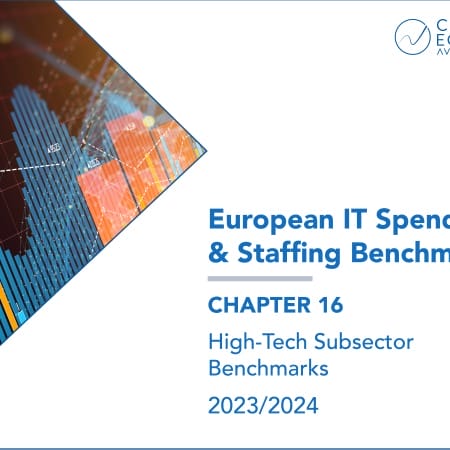
European IT Spending and Staffing Benchmarks 2023/2024: Chapter 16: High-Tech Subsector Benchmarks
Chapter 16 provides benchmarks for high-tech companies. The category includes computer products manufacturers, telecommunications equipment manufacturers, semiconductor manufacturers, aerospace and defense manufacturers, pharmaceutical makers, biotechnology product makers, software developers, software-as-a-service providers, and other high-tech companies. The 22 respondents in this sample range in size from a minimum of about €50 million to about €20 billion in revenue.
September, 2023
-

European IT Spending and Staffing Benchmarks 2023/2024: Chapter 3A: Small Organization Benchmarks
Chapter 3A provides benchmarks for small organizations, across all sectors in Europe. Small organizations are defined as organizations having IT operational budgets of of of less than €5 million
September, 2023
-
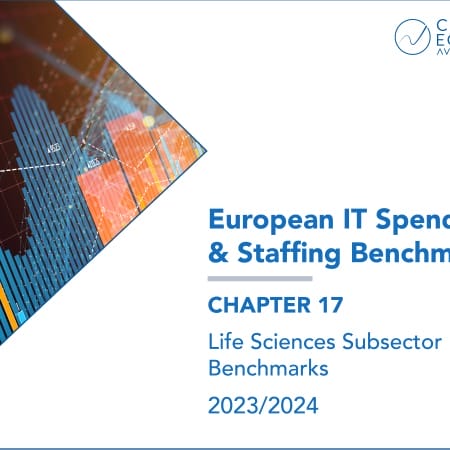
European IT Spending and Staffing Benchmarks 2023/2024: Chapter 17: Life Sciences Subsector Benchmarks
Chapter 17 provides benchmarks for life sciences companies. The category includes pharmaceutical makers, biotechnology product companies, and medical device manufacturers. The 16 respondents in this sample range in size from a minimum of about €50 million to about €40 billion in revenue.
September, 2023
-
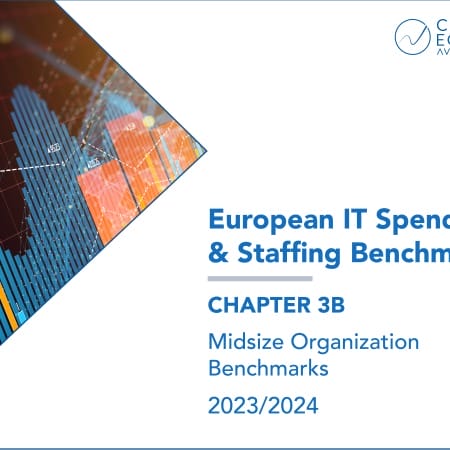
European IT Spending and Staffing Benchmarks 2023/2024: Chapter 3B: Midsize Organization Benchmarks
In these chapters, we provide a complete set of benchmarks for organizations within the specified size classification. IT operational budgets between €5 million and less than €25 million.
September, 2023
-
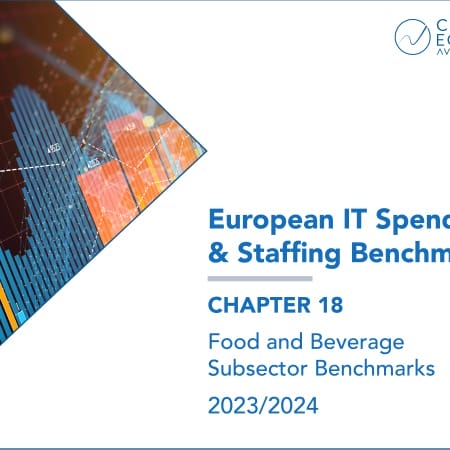
European IT Spending and Staffing Benchmarks 2023/2024: Chapter 18: Food and Beverage Subsector Benchmarks
Chapter 18 provides benchmarks for food and beverage manufacturers. The 23 respondents in the sample range in size from €100 million to over €25 billion in annual revenue. Food and beverage companies produce beverages, meat products, seafood products, dairy products, dietary supplements, bakery ingredients, and other consumable food products. Some are suppliers to other food manufacturers or to the food service industry, while many also distribute consumer products to retailers or direct to consumers.
September, 2023
-
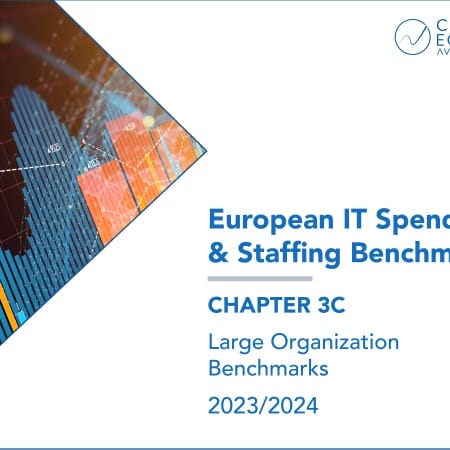
European IT Spending and Staffing Benchmarks 2023/2024: Chapter 3C: Large Organization Benchmarks
In these chapters, we provide a complete set of benchmarks for organizations within the specified size classification. IT operational budgets €25 million or greater.
September, 2023

 Grid View
Grid View List View
List View